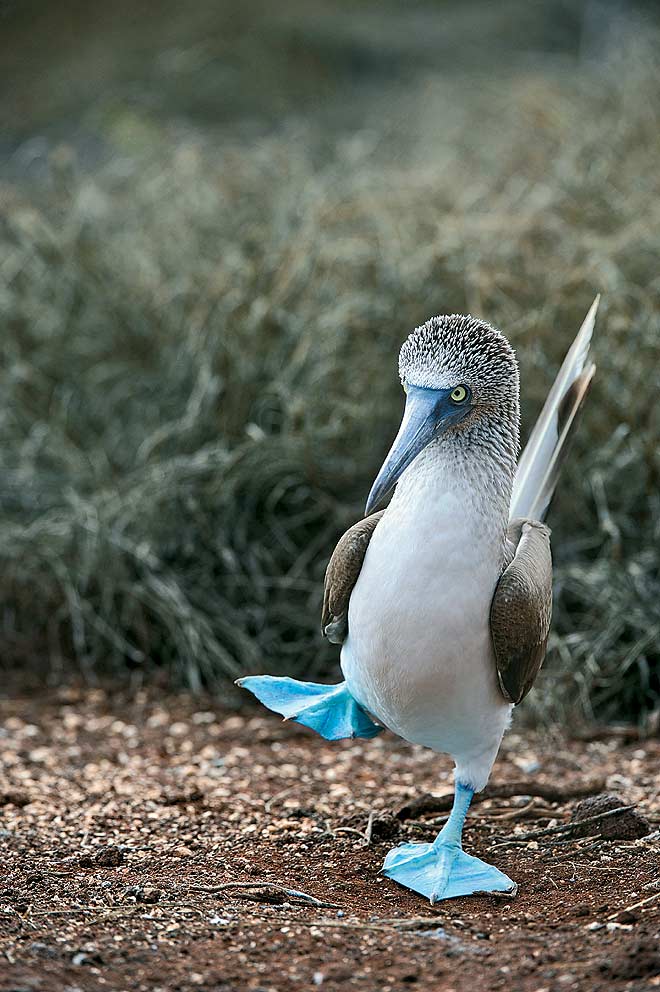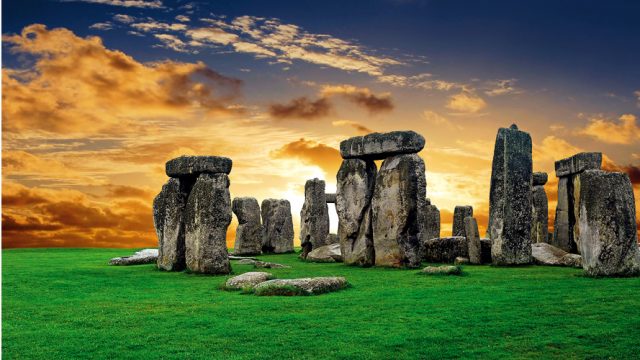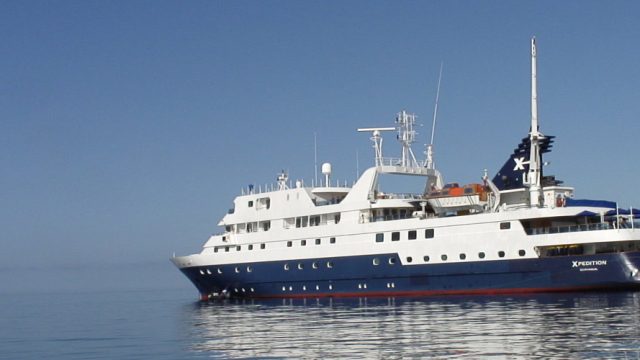Darwin’s field notes on the Galapagos Islands declare that it is a little world within itself, and
North Seymour island, near Baltra in central Galapagos, is famous for the unique male frigate birds that inflate a red throat pouch to attract the female of the species in the mating season. The blue-footed boobies here use their feet when they need a bit of romance in their lives, hopping from one foot to the other to do a kind of a dance. On the Bachas beachfront along the northern coast of Santa Cruz, also in the centre of the archipelago, seagulls, sea lions, pelicans and iguanas can usually be spotted not more than an arm’s length away. Punta Carrion towards the South Plaza island in the east is a great spot to snorkel and swim among the rays, sharks and hundreds of colourful tropical fish. Neighbouring Bartolome is where you can look at the finches famous for being the muse for Darwin’s theory of evolution by natural selection.
I could write here, I thought. This is a place where the animals and birds are curious about humans—almost as much as we are about them.

The Galapagos is a place where you can be unplugged and incommunicado. So remote are the islands that life takes on a new meaning away from the city lights. As soon as you step into the little boat for the daily excursions to the islands, the stress of withdrawing from the outside world slowly begins to fade. And I clearly remember the day when a total feeling of relaxation and rejuvenation washed over me. Day Four, South Plaza: cruising in the boat and watching hundreds of seagulls and sea lions diving into the sea with nothing but dark, rugged cliffs and deep blue waters surrounding us. I took a deep breath and let go. It felt blissfully wonderful. Reality would need to wait. For now, this was all that mattered.
In the Galapagos, everything is pronounced and clear: the sound of the waves breaking against the shores, the comforting sweep of the seagulls overhead, the vibrant hues of the land iguana and the coral reef under the sea. The expanse of nature here is something I will never forget—when you can actually hear the silence, and there is nothing in the far horizon till land appears as if by magic.

The Galapagos penguin is small, almost scrawny. While snorkelling, I think I see one perched up on the rocks above me. Before I can even blink, it dives into the waters and hurtles towards me, and then, a sudden 360° turnabout, and he’s out of the water in seconds, making me wonder if I imagined it all. In the Galapagos, you aren’t allowed to touch the animals, but there’s nothing you can do if they come close to you. Bumping into a dinosaur (or is that a marine iguana?) is entirely possible.

The giant tortoises are quite the stars of the Galapagos. I visit a farm in the highlands, and so intense is the excitement of seeing these gentle giants that I get drenched in the sudden shower, but it really doesn’t matter. The fields and green hills are dotted with huge gigantic rocks, but the ‘rocks’ are in motion—slow motion. These are the giant tortoises in the wild, following a migratory journey that’s been in progress for thousands of years. We are allowed to walk amongst these mighty creatures, but the rangers are close at hand, ensuring that we keep our distance from them. Later, I also spot the Galapagos hawk and the Galapagos dove while hiking on one of the islands. Endemic to the islands, creatures like these do not exist anywhere else in the world, which is what makes this place even more unique.

In the Galapagos, animals don’t fear humans. At first, I’m sceptical about this. I really don’t believe it. Surely, by now the animals would have become wary of humans. I’m totally taken aback, therefore, when on our first hike, we walk within inches of the Nazca boobies and their nests without attracting the slightest interest or alarm from them. Even when I’m literally inches away from prehistoric-looking marine iguanas, or hobnobbing with sea lions and penguins, I wonder if it’s for real. The isles are a reminder of what life once was, what life in some places still is. Each day out in the waters is different—stumbling upon Sally Lightfoot crabs with their vivid orange colour, spotting a hammerhead shark, seeing a water snake come out from a cave, or watching forests of coral and fish of every hue.

Even the vegetation and landscape varies from island to island here. On some, there are places where the rafts can land for either a dry or wet landing. On others there’s red sand or black sand. Since the origin of the Galapagos was volcanic, there are craters too. And lava formations created by centuries of volcanic activity make for landscapes that are unusual, bizarre even.
That’s the thing about the Galapagos—nothing is scripted, and the boundaries are hazy. The wildlife is unafraid of visitors, and the only rules are to walk within the gently marked pathways designed to keep human footprint to a minimum.
This vacation reminded me that there is still some magic in the world. And yes—most definitely—I could write here. And I did.
The information
Getting there: KLM, United Airlines, Air India and LAN Ecuador offer connections to the Seymour Airport at Isla Baltra in the Galapagos Islands (economy return fares start from Rs 1 lakh). The baggage limit on flights from mainland South America to Seymour is 20kg. The archipelago has another major airport at Isla San Cristobal—which is also connected to the mainland by three airlines, Tame, Avianca and LAN.
Currency: USD is the currency of Ecuador and the Galapagos Islands. Carry clean dollar bills and a stack of $1 bills for small expenses.
Visa: Indians can get a visa on arrival, free of cost.
When to go: In the Galapagos, there’s plenty to do and see all year round. However, most tourists visit in the months of June, July and August as well as between mid-December and mid-January. It’s also good to know that green turtles begin to lay eggs in January and penguins in the Bartolome island interact with swimmers from May through September. Experienced divers prefer to travel in the colder months as cold water attracts fantastic marine life like big schools of hammerhead sharks. Winter is also the time to spot whale sharks off the Wolf and Darwin islands.
Where to stay: It is advisable to stay in live aboard boats since the distance to be covered between islands is huge. There are about 80 vessels that offer this service. They travel by night and make two stops each day, which would total to about 20 stops in a 10-day trip covering about 10 different islands.
What to see & do: The most interesting species to spot in the 18 major islands of the Galapagos include marine iguana, some of the largest tortoises in the world, frigate bird and blue-footed boobies. Since the water here is untouched, the path is clear up to 80 feet in some places. Hence, one can opt to scuba dive or snorkel to get a peek at the abundant marine life. Those interested can also go kayaking at Tortuga Bay in Santa Cruz or elsewhere.
Every island has breathtaking landscapes. But look out for lava tubes—unique cave channels formed by volcanic activity.
Top tip: The best time to see animal activity is the wee hours in the morning, arriving before the crowds descend post breakfast. The light is perfect for photography as well.
wildlife in the Galapagos Islands
Leave a Reply
You must be logged in to post a comment.




